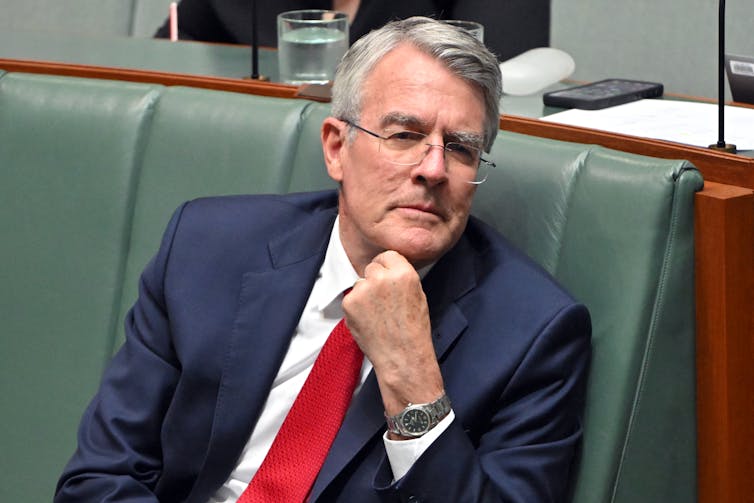In May, the federal government confirmed it’s working on new laws to prohibit hate speech, sometimes called vilification, based on sex, gender, sexuality, race or religion.
Many have welcomed the plan to introduce stronger laws as needed to tackle hate speech against Jewish, Palestinian and Muslim communities in the wake of growing antisemitism and Islamophobia in Australia.
Many people agree freedom of speech has its limits and the law has some role to play in prohibiting harmful speech. But what should these laws look like? Here are four things that should be addressed in the legislation.
1. Protection for specific attributes
Generally, hate speech can be seen as harmful speech or behaviour that attacks a person or a community simply because of who they are. People are targeted because of unchangeable characteristics such as their gender or sex, their sexuality, their race or religious background, or whether they have a disability or HIV. Research by the eSafety Commissioner has found hate speech based on these characteristics is growing, particularly online.
Hate speech doesn’t occur in isolation. It’s connected to societal and political treatment of marginalised communities. As hate speech increases, so does discrimination and violence against vulnerable groups.
For example, my research established women are often targeted by hate speech. One participant spoke about receiving messages describing sexually assaulting her in graphic detail. Gendered hate speech, like this example, is used to harass women and silence their voices in public spaces. Hate speech against women is also known to contribute to violence against women.
This is why new laws need to prohibit hate speech against many different attributes and not just focus on one community.

2. Protection for multiple risk factors
When someone uses hate speech to abuse a person or a group of people, often they are not only attacking them because of one characteristic, but because they cross over multiple characteristics. This is known as “intersectionality”, a concept first created by Professor Kimberlé Crenshaw. It argues people who have multiple attributes often experience discrimination and violence more often and more severely.
These experiences extend to hate speech. The eSafety Commissioner has found LGBTIQ+ or First Nations people experienced online hate speech at double the national average. LGBTIQ+ women are significantly more likely than heterosexual cisgender women to experience online gender and sexuality-based harassment. Women of colour are also more likely to be targeted by anonymous users online.
In my research, a participant spoke about her experiences of hate speech as a Muslim woman:
I happen to be brown and Muslim. So, a minority within a minority within a minority […] Sometimes it’s really difficult to extract the gendered side of it from the other dimensions of it, the racist, xenophobic side […] they are intertwined. Like when I get told, “Get back in the kitchen and make me a ham sandwich”.
This is why the law needs to prohibit hate speech that occurs because of “one or more” protected attributes.
3. Criminal and civil penalties
The federal government’s announcement indicates new laws prohibiting hate speech will include criminal – not civil – penalties. These new laws would only target deliberate acts that seek to incite violence or cause harm. New criminal laws will send a strong message to the community that hate speech is unacceptable.
However, the track record for prosecution of criminal hate speech laws is not strong. In Victoria it took almost two decades before anyone was prosecuted for serious vilification under the Racial and Religious Tolerance Act.
Changes to current sedition laws in the Commonwealth criminal code, which is a possibility suggested by some commentators, are also unlikely to lead to better results for communities targeted by hate speech. Rather, such changes are more likely to confuse the issue as these laws were originally introduced to target terrorism.
To make sure hate speech laws are effective, civil penalties are also needed. Civil laws exist at a federal level prohibiting race-based hate speech and these laws allow for victims to make complaints and engage in mediation. These laws are “harm-based”, meaning they capture conduct that causes harm to the victim, rather than criminal laws which are focused on incitement of violence. These laws also take into account the perspective of the target when considering whether material or behaviour amounts to hate speech.
New laws to prohibit hate speech need to include such harm-based civil laws, which will cover more conduct and put the power in the hands of the victims to make complaints.
4. Protection against backlash
As with any attempt to limit speech, even when it causes harm, there is a chance of community and political backlash against these laws and complaints made by victims. Such backlash can result in hate speech laws being enforced in troubling or harmful ways.
These laws may be weaponised against the very communities they are designed to protect. There have been cases where complaints of hate speech have been made specifically to undermine legal protections. In 2016, former Senator David Leyonhjelm made a complaint of racial vilification to the Human Rights Commission as part of his ongoing attack on part of the Racial Discrimination Act.
Protecting against backlash is difficult and requires the government to think carefully about how laws are designed. The purpose of new hate speech laws – to protect marginalised communities – must be clearly set out and understood by those tasked with enforcement.
It is also important the public is educated about why some limitation of speech is necessary when it causes harm to marginalised communities. Robust protection for legitimate speech, such as conduct that is reasonable and done for genuine academic, artistic, religious or scientific purpose or is a fair and accurate report of something in the public interest, must also be included in any new laws.
Creating effective and robust laws to prohibit hate speech at the federal level may be challenging but given what’s at stake, it’s worth getting it right.

